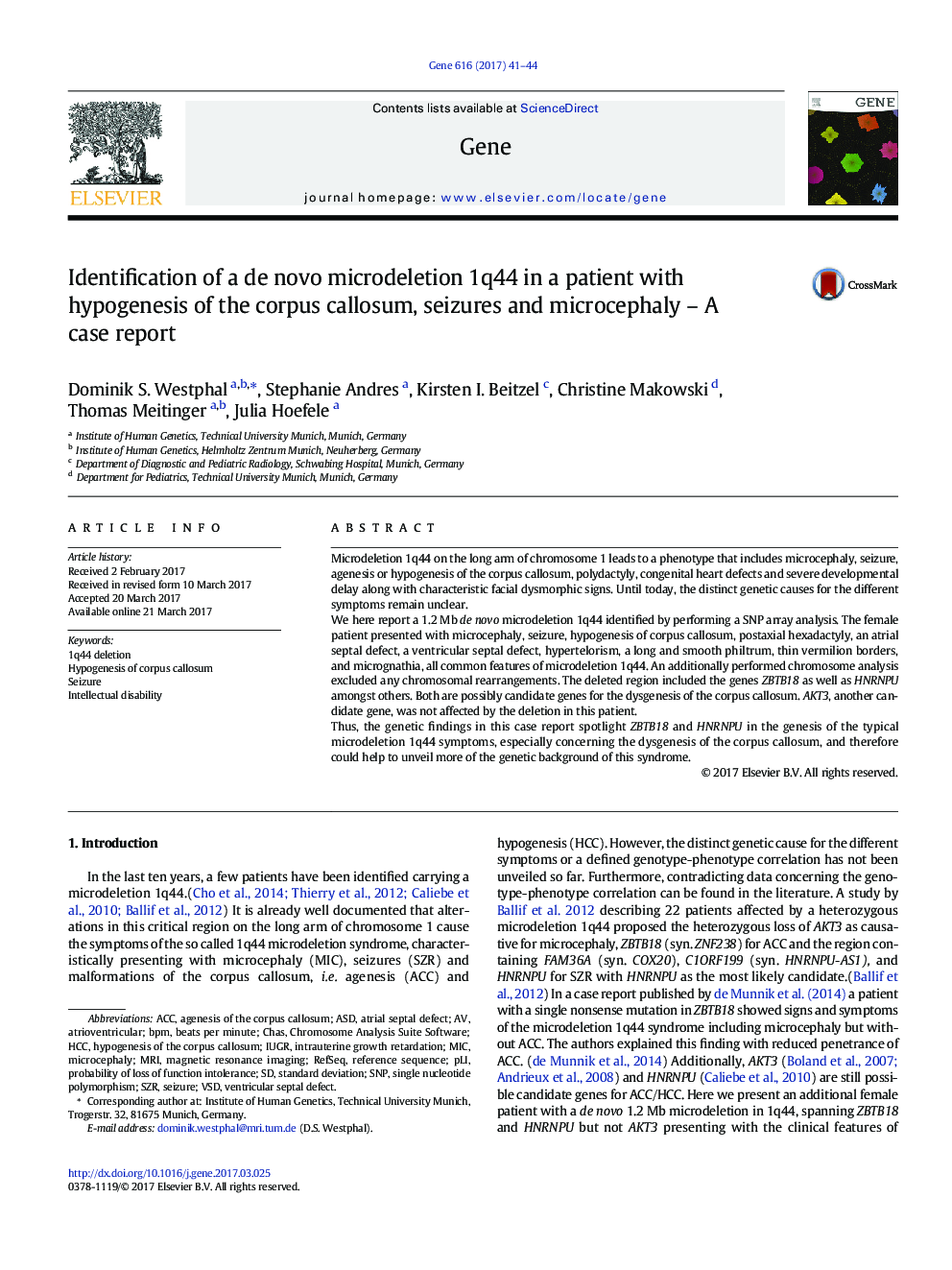| Article ID | Journal | Published Year | Pages | File Type |
|---|---|---|---|---|
| 5589594 | Gene | 2017 | 4 Pages |
â¢Here we report a patient with microcephaly, seizure, hypogenesis of the corpus callosum and congenital heart defects.â¢SNP array analysis revealed a 1.2 Mb de novo microdeletion 1q44 known as 1q44 microdeletion syndrome.â¢The deleted region spanned 11 RefSeq genes including ZBTB18 and HNRNPU but excluding AKT3.
Microdeletion 1q44 on the long arm of chromosome 1 leads to a phenotype that includes microcephaly, seizure, agenesis or hypogenesis of the corpus callosum, polydactyly, congenital heart defects and severe developmental delay along with characteristic facial dysmorphic signs. Until today, the distinct genetic causes for the different symptoms remain unclear.We here report a 1.2Â Mb de novo microdeletion 1q44 identified by performing a SNP array analysis. The female patient presented with microcephaly, seizure, hypogenesis of corpus callosum, postaxial hexadactyly, an atrial septal defect, a ventricular septal defect, hypertelorism, a long and smooth philtrum, thin vermilion borders, and micrognathia, all common features of microdeletion 1q44. An additionally performed chromosome analysis excluded any chromosomal rearrangements. The deleted region included the genes ZBTB18 as well as HNRNPU amongst others. Both are possibly candidate genes for the dysgenesis of the corpus callosum. AKT3, another candidate gene, was not affected by the deletion in this patient.Thus, the genetic findings in this case report spotlight ZBTB18 and HNRNPU in the genesis of the typical microdeletion 1q44 symptoms, especially concerning the dysgenesis of the corpus callosum, and therefore could help to unveil more of the genetic background of this syndrome.
